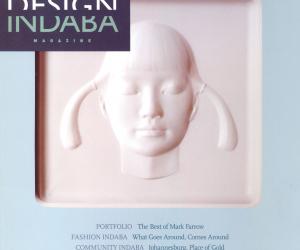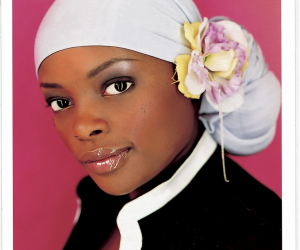First Published in
Drum and its style was a product of the fifties. Its monthly issues over those years reflect the unique character of a decade that occupied a crucial place in South African history. The look related specifically to the urbanising black workforce that was starting to form its own unique culture. Youths took the urbanising environment for granted and began to form a culture based on American style. They took with enthusiasm and style, those aspects of western society available to them in Hollywood movies and pulp fiction. They showed an outstanding energy and determination in adapting to the lopsided racial structure of South African society, and bent it to their own purposes. The magazine created an impression of glamour and excitement, and Sophiatown was a synthesis of the squalid and the tinseled, the sordid and the heroic, the destructive and the creative, which constituted the peculiar character of township life. All this was reflected in the fashion.
Fashion is not just about clothes. It is a statement about identity, about society and about allegiances. The way we dress says a lot about who we are and what we believe in. Style is not just about dress sense. It is about cultural identity and expression. It can even be a way of resisting oppression. The 'Drum style' of the fifties came to epitomize the struggle against the image of black people that the apartheid government was trying to circulate. From the 1920's to the 'roaring' forties, the emergent black urbanites mimetically copied trends from overseas in all spheres of culture and arts. They dutifully did the Charleston and the music and dress from Europe, but by the end of the 1940s shifts became evident towards American influences.
Then in a flash of lightning, the 1950's burst upon the scene and black society became injected with a new 'life serum', and the people underwent changes that surpassed anything in their history so far. Even the oppressors noticed, in surprise, that Sophiatown had become the heartland of developing urban black culture. It vibrated with activity, talk and excitement, and it was all reflected on the pages of Drum. In escape from the drudgery of repressive laws, the people formulated their own amusements and entertainment. Paramount among these was the shebeens and speakeasies, which became homes away from home where jazz players, singers, writers, artists and workers could drink illegally together.
Sof'town, Kofifi and its shebeen culture represented the South African ideal - a harmonious mix of cultures, colours, races, art, music and life. The Manhattan Brothers, under Nathan Dambuza Mdlele, the Woody Wood Peckers, under Boy Masango, the Merry Blackbirds and other big band groups developed their music. Dolly Rathebe and Dorothy Masuku, Miriam Makeba and Letta Mbulu sang the blues in nightclubs, shebeens and dancehalls. Gangsters paraded their fancy clothes and fancier ladies. It was hip, it was happening; it was the centre of the universe. Well-to-do men adopted the American 'zoot suits' and slang. The English-speaking residents referred to the community as 'Little Harlem'. Man, those jazz men were styling in their suits and tails. They often wore straw hats called 'dops' (with a narrow brim) or felt hats called 'ten gallons' (with a wider brim) or berets as they played the trumpet, clarinet or saxophone. The women's skirts swirled around as their dance partners spun them around the dance floors. It was jazz from morning and all through the night. The tsaba tsaba was the dance at the time of the American Jitterbug, known locally as 'jive'. Men and women danced towards each other, shaking the knees in a 'rubber legged' style and grinding their pelvises. Just before the couple reached each other they shouted 'Tsaba!' and they danced backwards to their starting points. Flashily dressed gangsters in Palm Beach suits, straw hats and white shoes - the 'Berliners' from the Western Township, the 'Americans' from Sophiatown and the 'Spoilers' from Alexandra township - would grab the beautiful girls and dance them around with knives or guns in their pockets. These were the street wise and sassy tsotsis. The noasisas (female hustlers) wore broad skirts and carried large handbags. Both the noasisas and the tsotsis lived very glamorous lifestyles making a lot of money from looting, stealing, pick pocketing and shoplifting. They bought swanky clothes and went to the cinema everyday where their heroes were the screen greats of Noir Cinema like Humphrey Bogart in The Maltese Falcon and Richard Widmark in Street With No Name.
Tsotsi was the urban pronunciation of 'zoot suit', a symbol of sophistication drawn from American culture, with its ready money and flashy clothes. They spoke the Afrikaans based flytaal/mensetaal which became tsotsitaal borrowing heavily from American slang. The tsotsis developed into a well-organised counter-society of gangs that adopted and copied the style of American cinema gangsters. They often wore long camel-coloured overcoats tied at the waist with a belt and Stetson hats in the manner of Bogart and Widmark. Although it was sometimes sordid and dangerous, Sophiatown developed a township culture of music and clothes, glamour and glitz that the community was proud of and which flew in the face of the apartheid government. Today this style is recognized as the 'Drum' style. There was an exuberance and a street style, a sense of identity that even Janet Jackson could recognize. She based the music video for her hit song 'Don't Know What You've Got 'Till Its Gone' on the shebeen culture of Sophiatown.
With the Sophiatown removals came the end of an era. People were moved out of Sophiatown to Meadowlands, which became a part of Soweto. A new style gradually grew called Pantsula and was also largely developed by the tsotsis. The hallmark of this style was the flat takkie, the Superstars, Converse All Star or North Star. The boot version of the takkie was called 'Voetsak' and was worn by the character Panic in the movie Mapantsula. Boys put thick layers of plastic in their shoes so that it would make a particular noise when they walked, they wanted people to know when they were coming.
In the late 60s and 70s there was a revival of a wave of gang styles in Soweto. Young men wore smart suits and Italian hats and tried to copy the sophistication and glamour of the lost Sophiatown. They also wore wide checked pants and caps with long peaks called iyase which they bent low over their faces, or the Stetson. The women wore full skirts with lots of pleats. (Miriam Makeba sang Pata-Pata and danced a bum jive. Partners patted each other and bumped their bums together). There were three main styles; The Pantsulas, The Vices and The Hippies, but only the Pantsula has lasted until today and has been drawn into the Kwaito culture. Kwaito stars like TKZ, bearers of the pantsula trademark and Trompies, who endorse the label FUBU, have reinterpreted the style. They wear loose, baggy pants and tight vests and lots of gold jewellery. They refer to themselves as Pantsulas remembering the stylish township dwellers of the late 60s and early 70s.
Looking back at the fifties, the 'Drum decade', it is not difficult to see why the style is being reinterpreted today. Inspired by the streetwise sassiness of the tsotsis, and the elegance and glamour of the style icons of that era, Miriam Makeba, sis' Dolly Rathebe, Mr. Drum, Henry Nxumalo and Can Themba, design houses like 'Stoned Cherrie' are taking us into the future of fashion by remembering those who had a style of their own (against all odds) who used their expression as a symbol of resistance and creativity in the face of oppression.
Ideas plundered from the wardrobes of the 80s may be the current trend of most international and local designers, but not all. Stoned Cherrie is reinventing styles from the 'Drum era' of the fifties, with remarkable flair and exuberance. Thinking hard about intelligent design, digging deep for sources of inspiration, filling the gap between fashion based on sex or commercialism while retaining elements of both and commenting self-reflexively on our colourful history as South Africans. Inspired by the Truth and Reconciliation's goal of attempting to reclaim the past for the present, Stoned Cherrie has used prints from the magazine on designs that hark back to the culture and style of the Sophiatown days, the jazz, the shebeens and the nice-time-girls.
Drum photographs courtesy of Bailey's African History Archive. Fashion photographs courtesy of Stoned Cherrie.






















